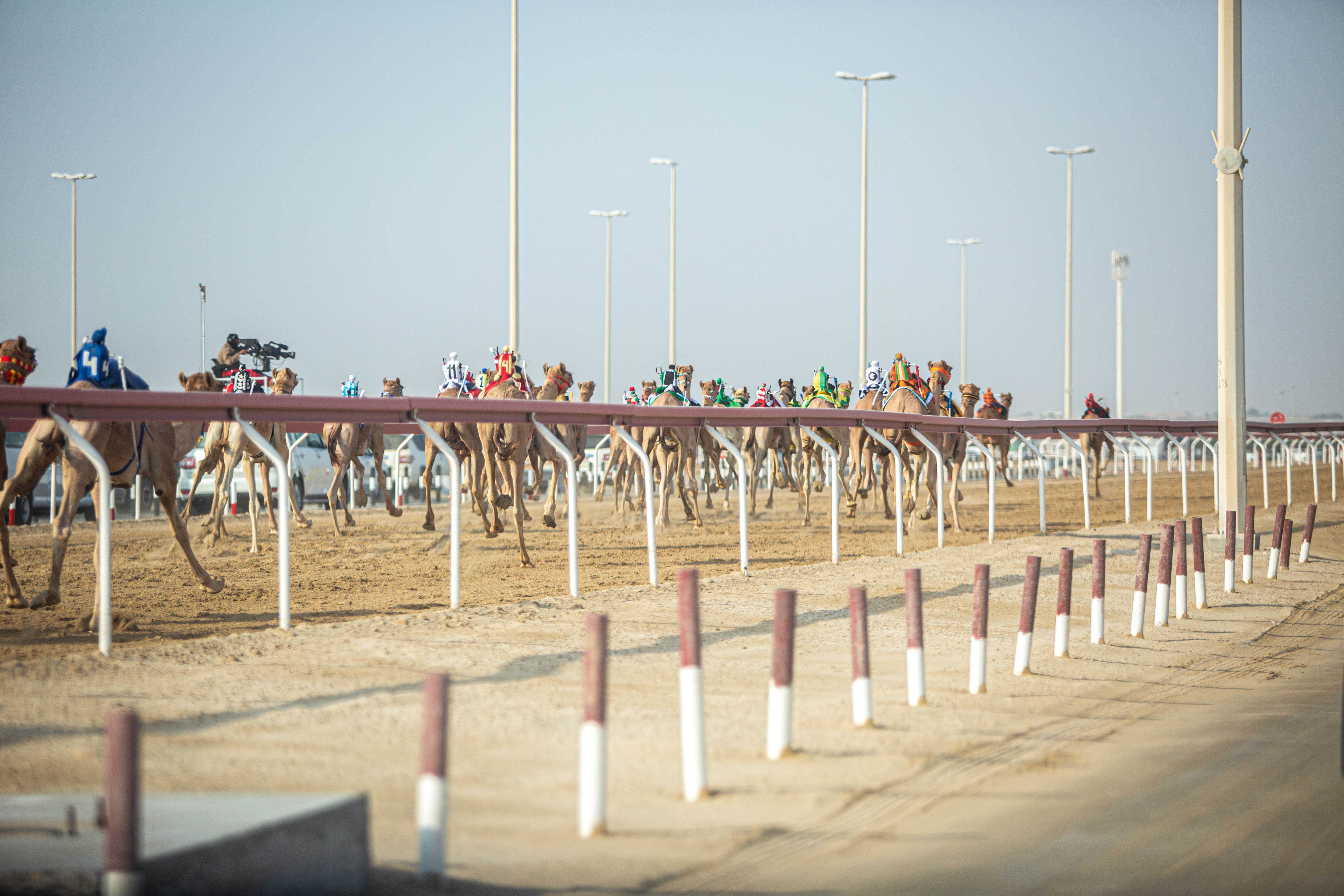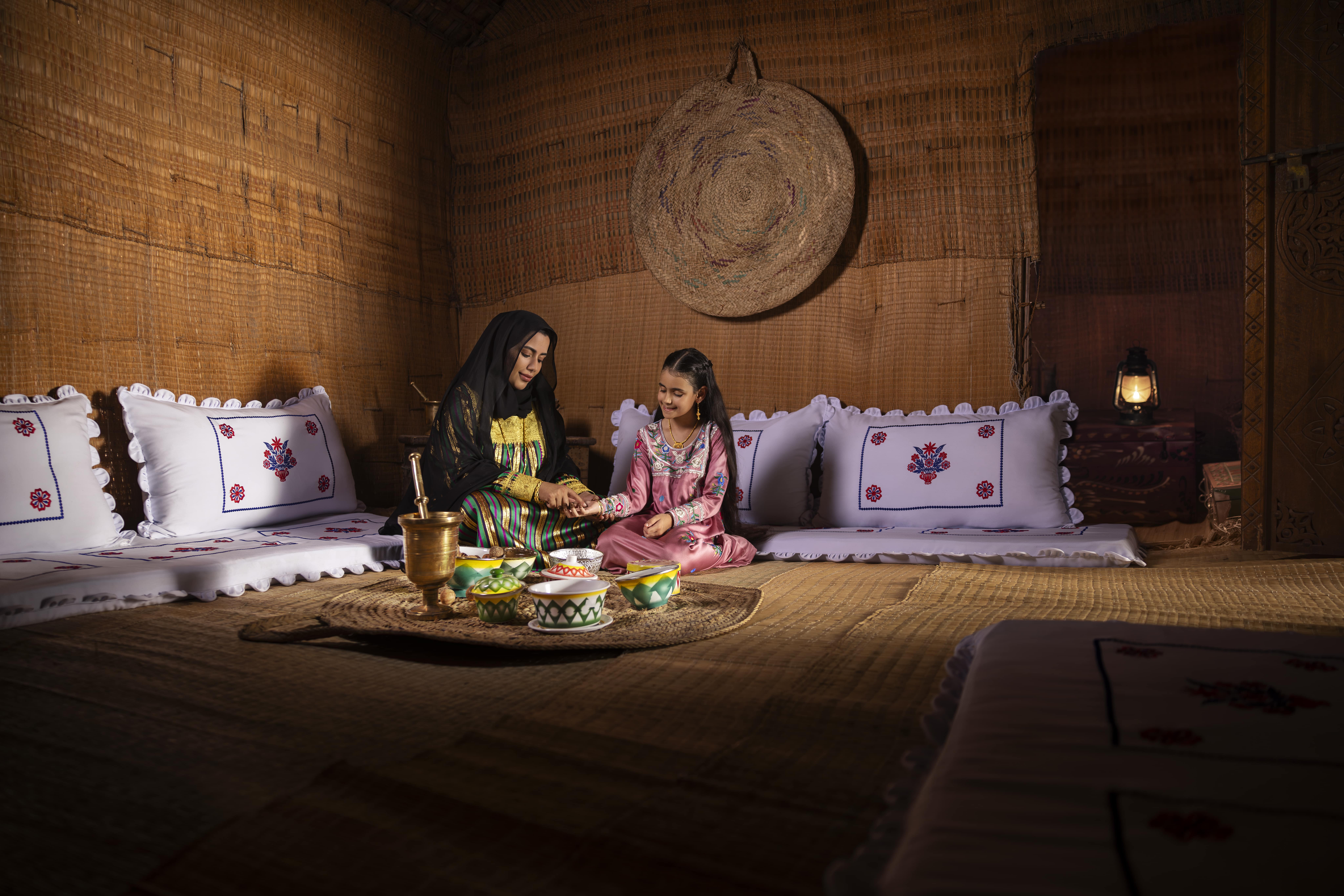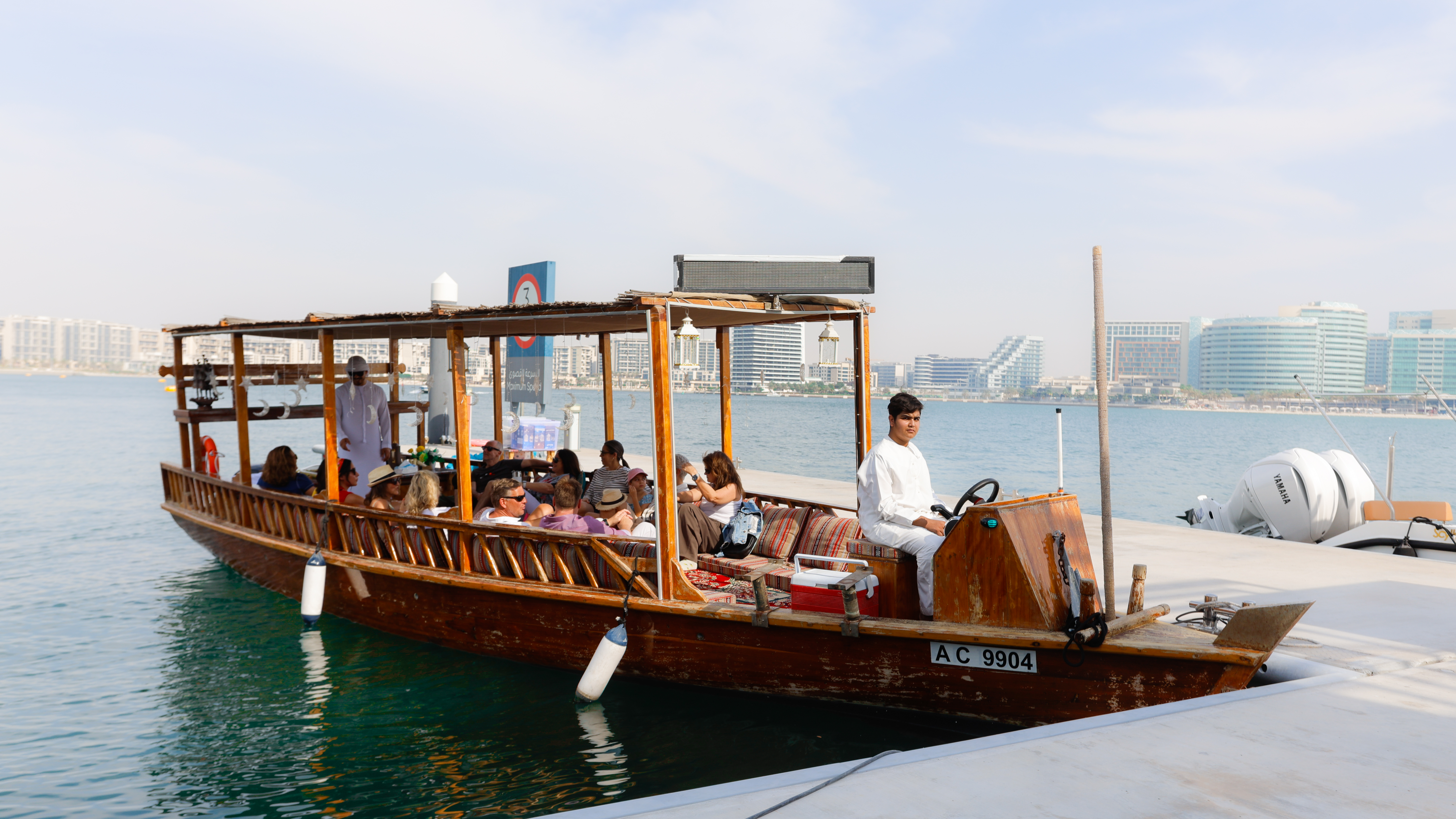
This is a traditional form of weaving practised by Bedouin (nomadic Arab people) women in the UAE. Traditionally, men shear goats and camels, and the wool is cleaned and prepared by the women, with the yarn being spun on a drop spindle before being dyed using local plant extracts, such as henna or saffron. Sadu is woven on a floor loom using a warp-faced plain weave, with traditional colours being black, white, brown, beige and red. Distinctive designs in the form of narrow bands of geometric patterns reflect both social identity as well as the surrounding environment.
This intricate weaving was used to create the Bedouin bait al-shaar (tent) with various Sadu patterns used to decorate interior tent dividers. Camels were also often decorated with ataad (camel accessories) made of Sadu, with the woven designs adding vibrancy and colour to saddles and straps. Traditionally, women gather in small groups to spin and weave, exchanging family news and occasionally chanting and reciting poetry.
In recognition of its importance, in 2011 Sadu was added to the UNESCO List of Intangible Cultural Heritage in Need of Urgent Safeguarding.












